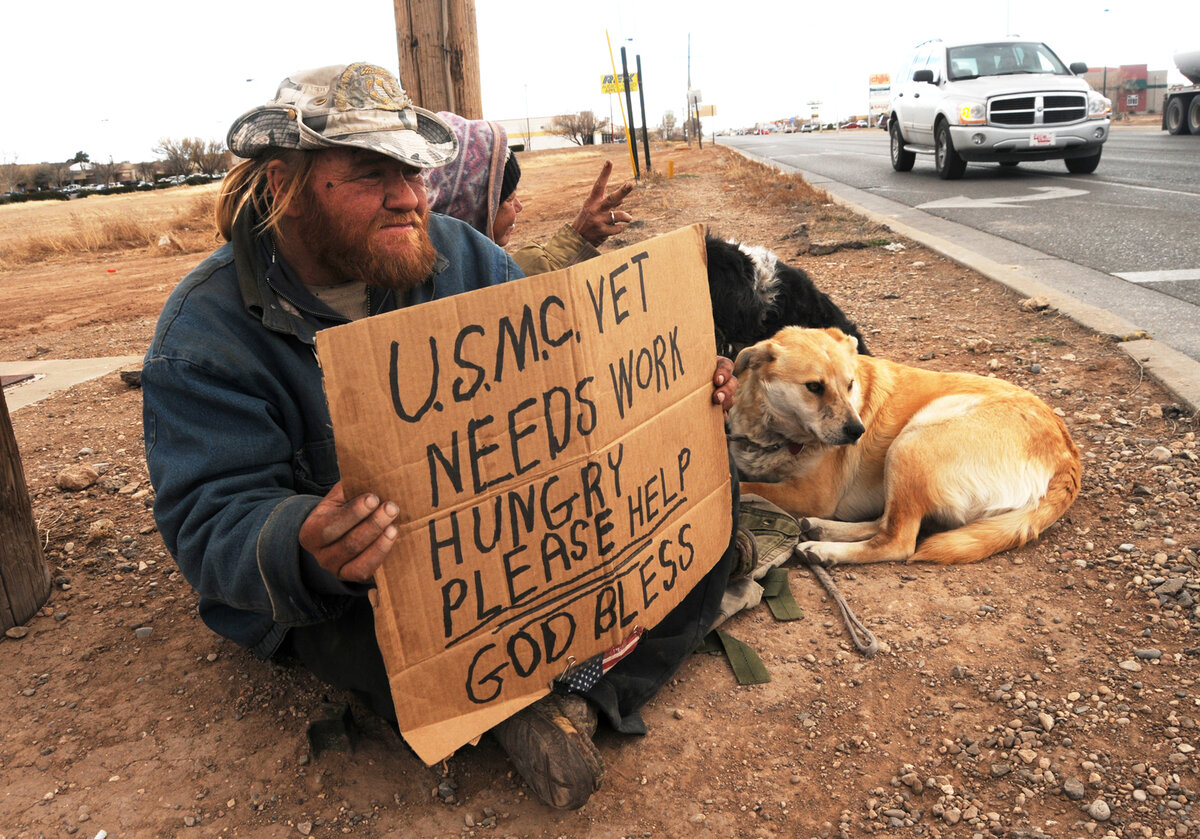Mayor Richard Berry of Albuquerque, N.M., was driving around the city when he noticed a man holding a sign that read “will work for food.” The man’s desire to be useful resonated with the mayor and ultimately became the genesis for a homeless work program called There’s A Better Way.
“Our mission is to make homelessness rare, short-lived, and nonrecurring,” says Doug Chaplin, director of family and community services at There’s a Better Way. The program strives to help homeless individuals by connecting them to day jobs, social services, and a place to sleep. “The moral thing to do is help folks become housed to offer some dignity and hope,” Mr. Chaplin says.
Since its inception in 2015, the Albuquerque program has had a ripple effect across other US cities, with more than 20 programs popping up from Anchorage, Alaska, and Honolulu to Denver; Tucson, Ariz.; and San Diego, all of which have implemented similar programs to aid their homeless populations in getting off the streets, out of shelters, and on a path to self-sufficiency.
The search for solutions to end homelessness comes at a time when more than half a million people in the United States are homeless. In Albuquerque, where homelessness has been a visible problem, There’s a Better Way is a compassionate approach that brings work to the homeless, the opposite tack to a nationwide movement that seeks to criminalize panhandling.
“The homeless work programs matter because homeless people by definition often have an interrupted work history.... They need help, and they need employment to pay for housing, so these [work programs] are very important,” says Nan Roman, chief executive officer and president of the National Alliance to End Homelessness.
Long-term housing and employment are key in ensuring an individual doesn’t end up back on the streets, experts say. And while giving homeless people short-term jobs such as trash collection or weeding won’t alone solve the problem, researchers say that as more cities put their weight behind the approach it could attract federal dollars, which would open the way for additional people to get stable jobs in service industries, as some already have.
In Albuquerque, a van picks up homeless workers, they are fed, and at the end of the day they are connected with housing and counseling services. The program has served 1,229 individuals who have worked a total of 48,000 different job shifts. Of those individuals, 59 have found permanent jobs, and 21 have been placed in stable housing.
Tucson and Denver have also made dents in their homeless populations through two work programs founded in late 2016. In the inaugural year of the Denver Day Works program, 39 percent of participants found permanent employment. In Tucson, 28 percent of the participants of the Tucson Homeless Work Program immediately found short-term jobs, and 14 percent have found long-term employment.
“I do think that the Denver Day Works program and other programs like it seem to get some good momentum,” says Marcus Ritosa, program manager of the Denver program, who regularly fields inquires about how to start similar initiatives. “It seems to be a step in a good direction, and it’s about actually engaging [with people] and recognizing their needs.”
For example, in Fort Worth, Texas, Kristy, a woman who had been homeless for three months, connected with the Clean Slate program. Five months after she started, Kristy moved into her own housing and found full-time employment with health benefits. Today, she actively seeks to help others make the same transition.
Since 2016, the Clean Slate Program has helped 42 people, and 15 have found permanent housing and employment.
However, Kirsten Ham, director of business at the program, believes that the process of helping the homeless could yield greater results if more employers in Fort Worth would be more willing and open to hiring homeless individuals.
“Stigmas and stereotypes need to be broken down. People need to start looking for gainful ways to take actions in their own community instead of waiting for a federal or governmental response to solve it,” Ms. Ham says. Nonetheless, she adds, the program has awakened the city to the severity of the problem: “[I]t’s reminded people of individuals in our community that struggle with homelessness”





